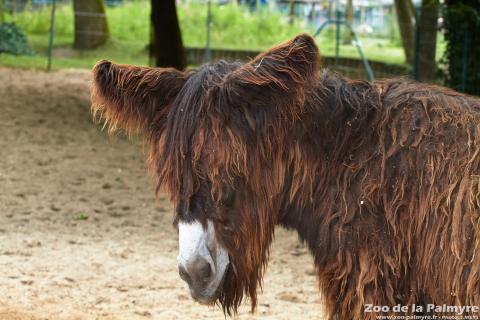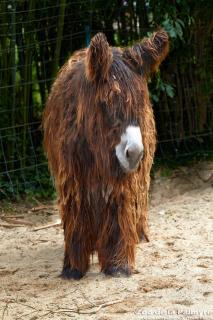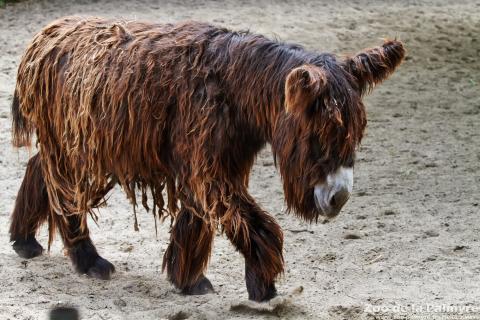Poitou Donkey

Poitou Donkey

-
Class
Mammalia -
Order
Perissodactyla -
Familly
Equidae
-
 135 à 150 cm au garrot
135 à 150 cm au garrot -
 250 à 430 kg
250 à 430 kg -
 12 months
12 months -
 1
1 -
 20–30 years
20–30 years
-
Diet
herbivorous -
Habitat
prairies -
Range
western France (Deux-Sèvres, Vienne, Vendée, Charente, Charente-Maritime) -
Espèce non évalué par l'IUCN
-
Population in the wild
Unknown
Mules appeared in France in the 10th century, when hinny cross-breeding is reported, but the first document specifically mentioning the Poitou Donkey dates from the 18th century.
Poitou Donkeys are not used as pack animals but for breeding. They used to be cross-bred with Poitou mare hinnies to create very high-quality mules (or smaller mulets). These two races of mule are indeed the largest, with cross-breeding producing among the strongest mules and mulets in the world, capable of carrying heavy loads over difficult terrain.
The mule and mulet trade in Poitou reached its height in the 19th century, when more than 18,000 were sold in the region every year. With industrialisation, demand fell considerably. Overseas trade continued to offer an outlet for the race, but then World War I halted exports abroad. At the end of the 1970s, there were only 44 specimans in existence, spread across a dozen breeders, and the race was on the brink of extinction.
In 1980, the French National Studs and Marais Poitevin Regional Natural Park decided to instigate a plan to preserve the race. Numbers have risen gradually, although the level of inbreeding remains high.





